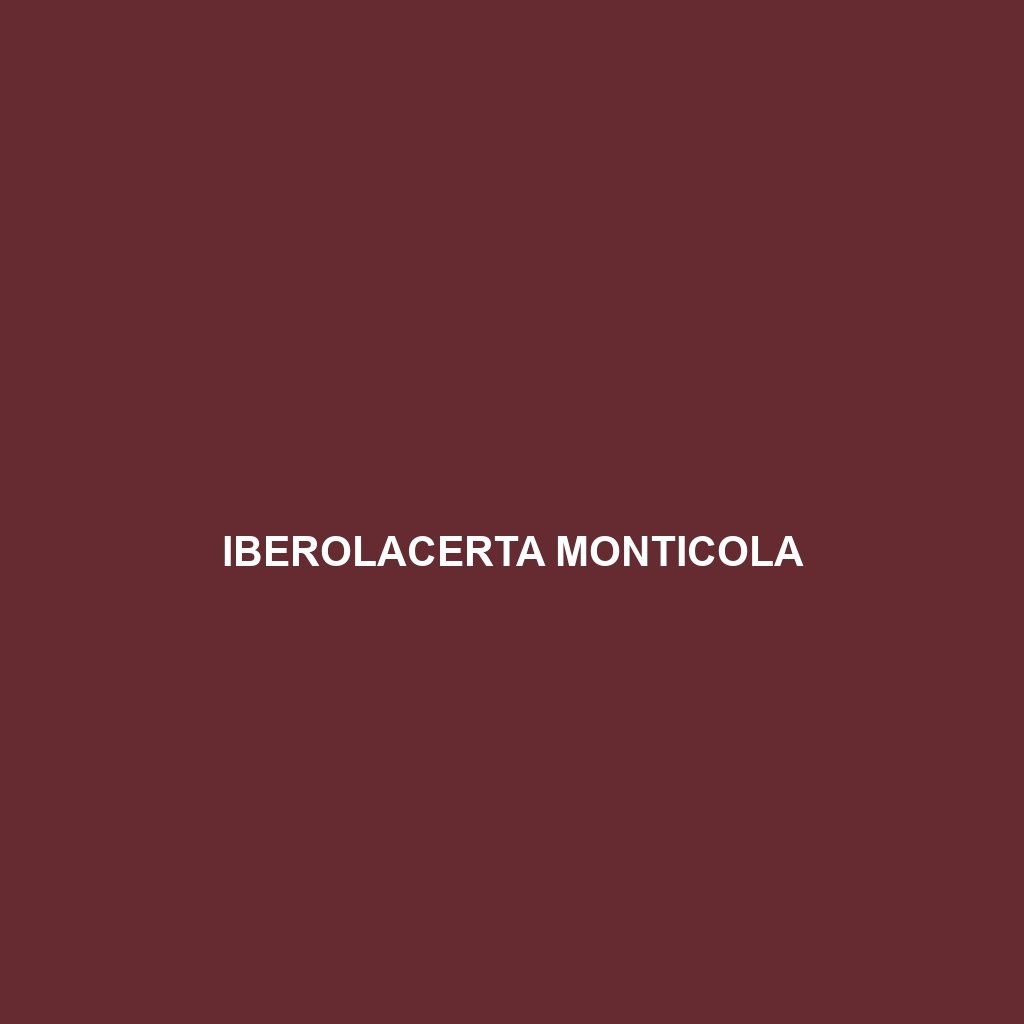Common Name
Iberolacerta monticola
Scientific Name
Iberolacerta monticola
Habitat
Iberolacerta monticola, commonly known as the Iberian rock lizard, is primarily found in mountainous regions across the Iberian Peninsula, specifically in northern Portugal and northern Spain. Preferring rocky outcrops and slopes, these lizards inhabit areas with abundant vegetation and sun exposure, including temperate forests and mountainous terrain. These habitats often feature a moist climate with a notable presence of scrubland and grassland, providing an ideal microhabitat rich in food sources and shelter. The optimal environmental conditions are characterized by moderate temperatures and adequate humidity, crucial for their survival and reproduction.
Physical Characteristics
The Iberolacerta monticola can be distinguished by its slender body structure, which typically reaches a length of about 20 to 25 cm (including the tail). It exhibits a notable variation in coloration, which can range from bright green to brownish hues. The dorsal side often bears attractive patterns of spots or stripes, aiding in camouflage against its rocky surroundings. A key identification feature is its elongated limbs and sharp claws, which facilitate climbing and stability on steep surfaces. Their smooth, shiny scales exhibit iridescence under sunlight, enhancing their aesthetic appeal.
Behavior
Iberolacerta monticola displays primarily diurnal behavior, being more active during the daytime. These lizards are known for their agile movements and proficient climbing skills, often observed basking on rocks to regulate their body temperature. During the breeding season, males engage in elaborate courtship displays to attract females, which can include head-bobbing and physical posturing. Social interactions are typical during this period, with males often competing for territory and mating rights. While capable of fleeing from predators, these lizards are also known for their tendency to retreat into crevices among rocks when threatened, showing an interesting escape strategy.
Diet
The dietary preferences of Iberolacerta monticola categorize it as an insectivore. Its diet primarily consists of various arthropods, including insects such as crickets, beetles, and ants. Occasionally, these lizards may consume small invertebrates and plant material, demonstrating some omnivorous traits. Feeding typically occurs during warmer parts of the day, aligning with their diurnal activity patterns. Their foraging behavior is characterized by a keen sense of vision, allowing them to spot prey from a distance, followed by quick movements to capture it.
Reproduction
The reproductive cycle of Iberolacerta monticola spans from spring to early summer, with mating generally occurring during April and May. Females lay clutches of approximately 4 to 10 eggs, which they deposit in hidden, moist locations to enhance survival rates. The incubation period lasts about 8 to 12 weeks, depending on environmental conditions such as temperature and humidity. Once hatched, the juvenile lizards are self-sufficient, relying on their instinctive behaviors for foraging and avoiding predators. Parental care is not exhibited, typical of many lizard species.
Conservation Status
Currently, Iberolacerta monticola is classified as Least Concern according to the IUCN Red List, suggesting its populations are relatively stable. However, they face threats from habitat loss due to urbanization and agricultural expansion, which fragment their living environments. Conservation efforts include habitat preservation and monitoring of population dynamics to ensure their continued survival within the ecosystem. Ongoing studies are crucial to assess potential risks from climate change and invasive species that could disrupt their existing habitats.
Interesting Facts
One remarkable fact about Iberolacerta monticola is its remarkable adaptability to various types of rocky environments, allowing it to thrive in a range of mountainous landscapes. Additionally, these lizards engage in social hierarchy behaviors, where dominant males often have the most favorable territorial claims. Their capacity to regrow tails after losing them during predator encounters is also a fascinating trait that aids in their survival.
Role in Ecosystem
Iberolacerta monticola plays a significant role in its ecosystem as both a predator and prey. By consuming a large quantity of insects, it helps regulate insect populations, contributing to the overall health of their mountainous habitats. Moreover, as prey, these lizards serve as a food source for various birds of prey and larger mammals, underscoring their importance in the food web. Their presence indicates a healthy ecosystem, and their interactions with other species contribute to the biodiversity within their habitat.
